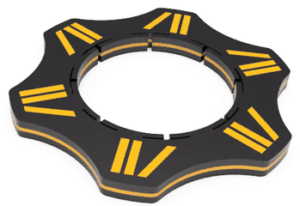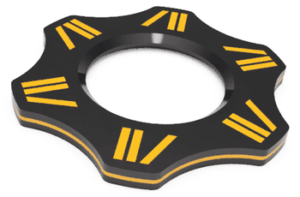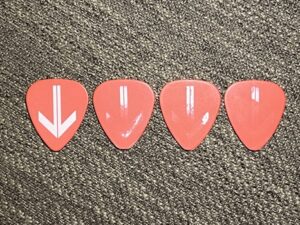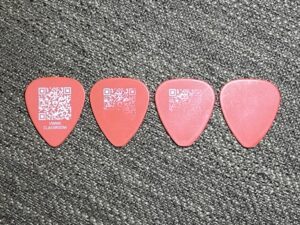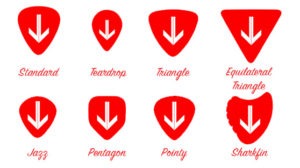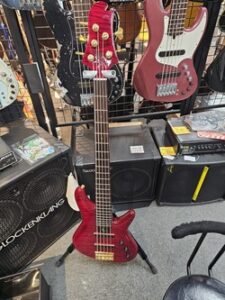
Acoustic Guitar or Electric Guitar lessons first?

Should your child start with acoustic or electric guitar lessons? This is a common question we’ve encountered throughout our decade of experience at Vinnie Classroom. Many children are eager to learn the electric guitar, while parents often consider the higher start-up costs compared to an acoustic guitar. But is there a definitive right way to begin learning the guitar? If you’re facing this dilemma, let us guide you!
Yes, we offer both Acoustic guitar and Electric guitar lessons!
Unlike some guitar schools that offer only acoustic or electric guitar lessons, we provide both! This means we’re not here to claim that one is better than the other. Instead, this article aims to outline the pros and cons of each, helping you make an informed decision. But if we had to sum it up for you—there’s no wrong choice!
We are a music school offering guitar lessons at Upper Thomson Road, Singapore. Signing up for guitar lessons with us means learning from a team with over 10 years of experience running a successful music school in Singapore. Over the years, we have refined our teaching methods to ensure they are engaging, effective, and tailored to suit students of all ages and skill levels. Our commitment to excellence goes beyond lessons—we organize annual recitals! It provides our guitar students with the opportunity to showcase their progress, build confidence, and experience the joy of performing.
Pros and cons of learning the acoustic guitar first
The acoustic guitar holds a significant place across various music genres and scenes. It’s a favorite among strum-and-sing musicians and is highly cherished by fingerstyle guitarists. If you prefer a straightforward playing experience without the hassle of effect pedals and amplifiers, the acoustic guitar’s simplicity will appeal to you. However, there are still reasons why some musicians choose electric over acoustic. Let’s explore!
Pros of Learning the Acoustic Guitar:
- Portability & Simplicity – No need for amplifiers, cables, or effects; just pick it up and play anywhere.
- Stronger Finger Development – The higher string tension helps build finger strength and dexterity faster.
- Great for Song Accompaniment – Ideal for strumming and singing along, making it perfect for solo performances.
- Lower Initial Cost – Generally more affordable than electric guitar setups, with no need for extra gear.
- Versatile Across Genres – Well-suited for folk, pop, country, blues, and even fingerstyle music.
Cons of Learning the Acoustic Guitar:
- Higher String Tension – Can be harder on beginners’ fingers, making it more challenging to press down on strings.
- Less Tonal Variety – Limited sound options compared to electric guitars with effects and amplification.
- Bulkier & Less Ergonomic – Larger body size may feel uncomfortable for younger or smaller players.
- Not Ideal for Rock & Metal – Lacks distortion and sustain, making it unsuitable for certain genres.
- Requires More Finger Strength – Barre chords and complex fingerpicking can be more demanding compared to an electric guitar.
That said, many of these drawbacks can be addressed with the right solutions. For instance, high string tension can be reduced by choosing the right strings and ensuring the guitar is properly set up by a professional. The issue of a bulky guitar body is no longer a concern, as there are various shapes and sizes available, including 3/4-sized guitars for younger children. Additionally, learning on an acoustic guitar helps develop finger strength, which can be beneficial when transitioning to electric guitar later. Its portability also allows students to practice anywhere at home. Overall, we generally recommend beginners start with the acoustic guitar.
Pros and cons of learning the electric guitar first
The electric guitar has an undeniable cool factor that many people are drawn to. Learning it allows students to experiment with sound effects and create unique tones—something not easily achievable on an acoustic guitar without technical knowledge. Electric guitars also come in a wide variety of bold shapes and vibrant colors, offering a flashier aesthetic compared to the traditional wooden tones of acoustic guitars. These exciting features often make the electric guitar the first choice for many young learners. But is starting with an electric guitar the best option? Let’s find out.
 Pros of Learning the Electric Guitar First:
Pros of Learning the Electric Guitar First:
- Easier Playability – Lighter string tension and a slimmer neck make it easier for beginners to press down on the strings and form chords.
- Greater Sound Variety – Effects pedals and amplifiers allow students to explore different tones and genres, from clean blues to heavy metal.
- More Engaging for Young Learners – The “cool factor” of an electric guitar, along with the ability to play rock songs early on, can keep students motivated.
- Lower Finger Strain – The softer strings and lower action reduce finger discomfort, making it less painful for beginners.
- Volume Control – With an amp and headphones, students can practice quietly without disturbing others.
Cons of Learning the Electric Guitar First:
- Higher Initial Cost – Requires additional gear like an amplifier, cables, and possibly effects pedals, making it more expensive than an acoustic guitar.
- More Complex Setup – Learning to manage amps, effects, and different guitar settings can be overwhelming for absolute beginners.
- Less Focus on Finger Strength – The lighter strings and lower action mean students may not develop as much finger strength early on, which can be beneficial when transitioning to acoustic.
- Portability Issues – Unlike an acoustic guitar, an electric guitar needs an amp for full sound, making it less convenient for spontaneous practice.
- Risk of Over-Reliance on Effects – Beginners may focus more on effects and distortion rather than proper technique and playing dynamics.
In general, the electric guitar lacks mobility due to its more complex setup. Even with modern solutions like headphone amplifiers, playing still involves managing multiple cables and equipment. Additionally, some budget-friendly electric guitars made from cheaper wood can be quite heavy, making them less suitable for young children. That said, as mentioned earlier, the electric guitar has its advantages. The “cool factor” plays a key role in keeping students motivated—both the acoustic and electric guitar require consistent practice, and for some, the excitement of learning electric can make practice feel more purposeful. Ultimately, we recommend starting with the electric guitar if the student has a strong interest and understanding of what it entails!
Conclusion
Ultimately, whether a student should start with the acoustic or electric guitar depends on their personal interests, goals, and learning preferences. The acoustic guitar offers simplicity, portability, and a solid foundation for finger strength, while the electric guitar provides versatility, ease of play, and an exciting range of sounds. Both instruments require dedication and practice, and there is no absolute right or wrong choice. The best option is the one that keeps the student engaged and motivated to continue their musical journey. Whatever the decision, the most important thing is to start and enjoy the process of learning and making music!
However, if you still need help, talk to us. Taking guitar lessons can help you understand more about guitar picks!
Consider taking a Trial Lesson with us! I am sure with our decade-long experience, we will be of valuable help to you.














